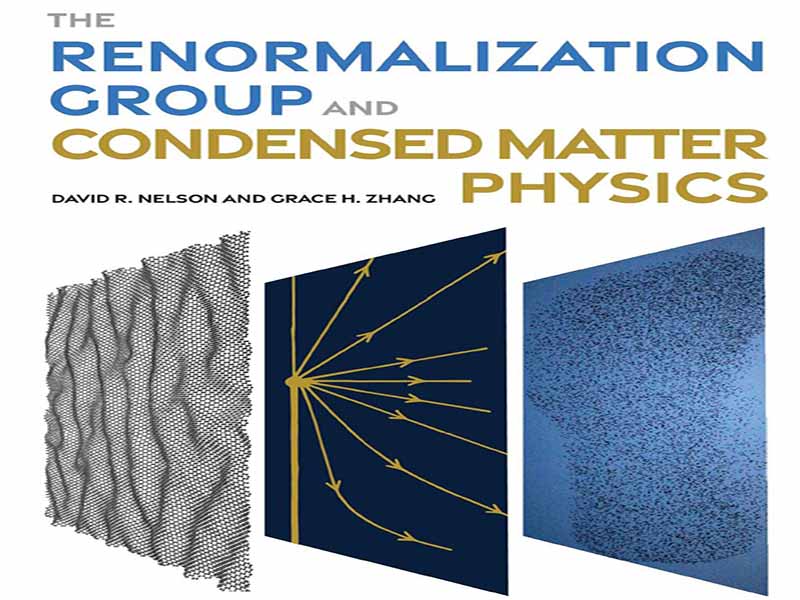- عنوان کتاب: The Renormalization Group and Condensed Matter Physics
- نویسنده: David R. Nelson Grace H. Zhang
- حوزه: ماده چگال
- سال انتشار: 2025
- تعداد صفحه: 383
- زبان اصلی: انگلیسی
- نوع فایل: pdf
- حجم فایل: 7.93 مگابایت
ایدههای گروه بازبهنجارش کنت جی. ویلسون، کمی بیش از 50 سال پیش، چشمانداز فیزیک ماده چگال را متحول کرد. برخی از ایدههای ویلسون را میتوان به کار گل-مان و لو در درک الکترودینامیک کوانتومی در فواصل کوچک در اواسط دهه 1950 میلادی نسبت داد. با این حال، دیدگاه گل-مان و لو، دیدگاهی فرابنفش بود و ویلسون در عوض میخواست بر فیزیک مادون قرمز فواصل بزرگ و مقیاسهای زمانی طولانی تمرکز کند که توسط طولهای همبستگی واگرا و کند شدن بحرانی مشاهده شده در نقاط بحرانی که معمولاً در فیزیک ماده چگال و شیمی فیزیک رخ میدهد، تحریک میشد. در واقع، ویلسون به زودی تشخیص داد که نه تنها نقاط بحرانی، بلکه کل فازهای ماده را میتوان با یک نظریه جهانی و دانه درشت با طول موج بلند توصیف کرد. به عنوان مثال، ویلسون استدلال کرد که رفتار هیدرودینامیکی لاندائو با آهنرباهای دور از نقاط بحرانی، خود نمایانگر یک نقطه ثابت گروه بازبهنجارش به ویژه ساده است. دیدگاه مشابهی برای معادلات هیدرودینامیکی حاکم بر مکانیک سیالات، که در قرن نوزدهم به دست آمدهاند، امکانپذیر است. با انتگرالگیری از حالتهای فرکانس بالا و طول موج کوتاه مرتبط با درجات آزادی میکروسکوپی، باید بتوان به عنوان مثال به معادلات ناویر-استوکس رسید. برای داشتن قوانین فیزیکی جهانی، که نسبت به جزئیات میکروسکوپی غیر حساس باشند، لازم نیست در یک نقطه بحرانی باشیم. یک نظریه هیدرودینامیک موفق، جهل در مورد جزئیات دقیق میکروسکوپی را در چند پارامتر دانه درشت که یک نقطه ثابت هیدرودینامیکی را توصیف میکنند، مانند چگالی و ویسکوزیته یک سیال تراکمناپذیر که توسط معادلات ناویر-استوکس توصیف میشود، خلاصه میکند. همین نظریه جهانی، با محدودیتهای مناسب، در مورد سیالات متشکل از آب، تولوئن، بنزن، هوا و بسیاری از مواد دیگر نیز صدق میکند.
The renormalization group ideas of Kenneth G. Wilson began transforming the landscape of condensed matter physics a bit more than 50 years ago. Some of Wilson’s ideas can be traced back to the work of Gell-Mann and Low on understanding quantum electrodynamics at small distances in the mid 1950s However, Gell-Mann and Low’s perspective was an ultraviolet one, and Wilson wanted instead to focus on the infrared physics of large distances and long time scales, stimulated by the diverging correlation lengths and critical slowing down observed at critical points that commonly occur in condensed matter physics and physical chemistry. In fact, Wilson soon recognized that not just critical points but entire phases of matter can be described by a universal, coarse-grained long wavelength theory. For example, Wilson argued that Landau’s hydrodynamic treatment of magnets far from critical points was itself representative of a particularly simple renormalization group fixed point. A similar perspective is possible for the hydrodynamic equations governing fluid mechanics, derived in the nineteenth century. By integrating out the high frequency, short wavelength modes associated with microscopic degrees of freedom, one should be able to arrive at, for example, the Navier-Stokes equations. One does not have to be at a critical point to have universal physical laws, insensitive to microscopic details. A successful hydrodynamic theory packages ignorance about the precise microscopic details into a few coarse-grained parameters describing a hydrodynamic fixed point, such as the density and viscosity of an incompressible fluid described by the Navier-Stokes equations. The same universal theory applies, with suitable restrictions, to fluids composed of water, toluene, benzene, air and many other substances.
این کتاب را میتوانید از لینک زیر بصورت رایگان دانلود کنید:
Download: The Renormalization Group and Condensed Matter Physics




































نظرات کاربران